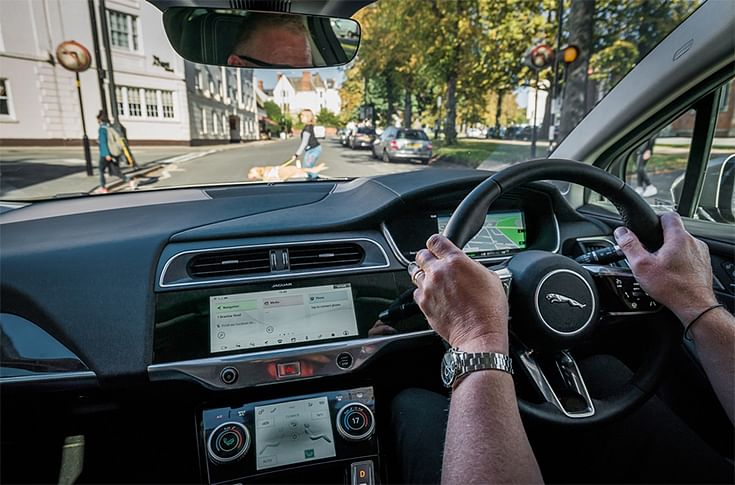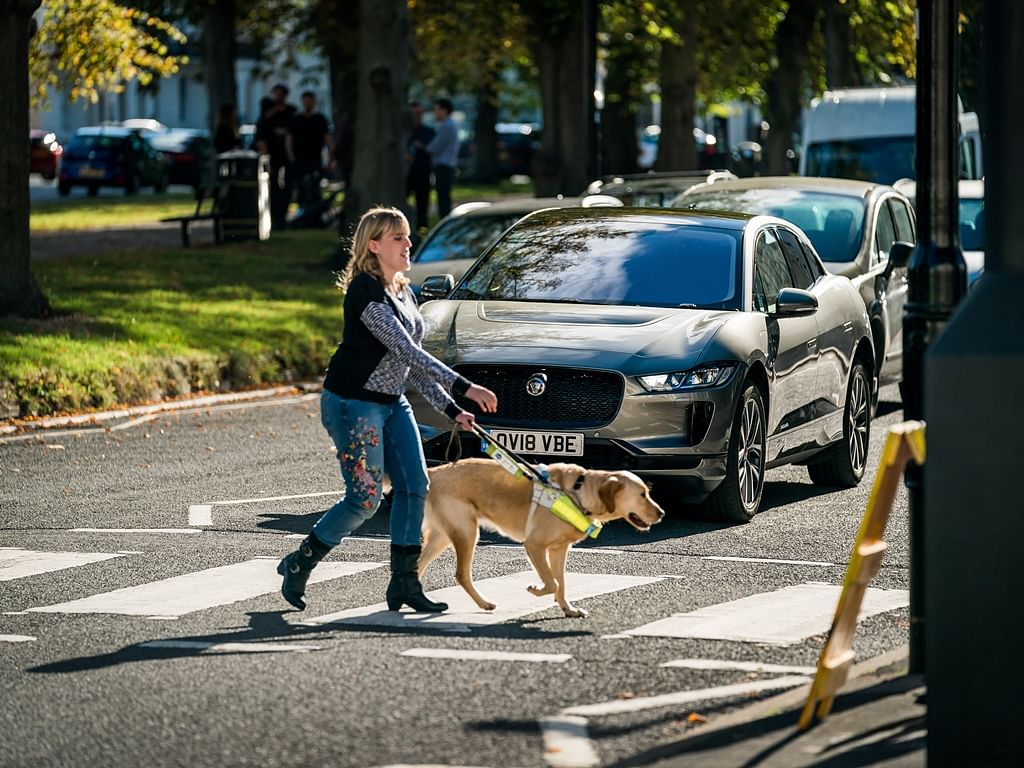Jaguar deploys AVAS to its silent I-Pace
The system warns blind, visually impaired and other vulnerable road users that the EV is approaching at low speed.
Jaguar has designed an Audible Vehicle Alert System (AVAS) for its first EV, the I-Pace, that meets and exceeds all forthcoming global legislation. Jaguar’s engineers have developed a sound that can be heard at speeds up to 20 km/h and exceeds the 56dB(A) minimum required by forthcoming European legislation – the strictest in the world – for all new EVs from July 2019.
The I-Pace’s sound was tested by members of Guide Dogs for the Blind, the UK’s leading charity for people affected by sight loss, as part of the testing undertaken by Jaguar. It also marks the start of an on-going relationship between the two organisations.
Iain Suffield, Jaguar NVH Technical Specialist, said: “The absence of traditional engine noise from electric vehicles creates a problem for vulnerable pedestrians, such as the blind or visually impaired. This is especially true at low speeds in town centres and car parks. We developed the Audible Vehicle Alert System for the I-Pace to ensure the safety of all road users. Our potentially life-saving technology cannot be switched off and as the leading charity for people with sight loss, we are pleased to have the support of Guide Dogs to ensure that real people are at the heart of our product testing.”
Jaguar’s engineers is said to have worked for four years to develop a soundtrack that is audible yet discreet and cannot be heard from inside the vehicle. Initial attempts to create a noise inspired by the sound of sci-fi spacecraft had to be shelved after pedestrians reacted by looking up to the sky, rather than at the road, as the vehicle approached.
Engineers tested sounds in a number of environments, including an anechoic chamber (specialised echo-free room) and various urban scenarios, before settling on the final sound for the I-Pace. It is emitted from a speaker located behind the front grille, can be heard in every direction and cannot be disengaged.

The audio alert increases in pitch and volume in line with the speed of the vehicle and, when in reverse, is accompanied by an additional tone that indicates the change in direction. AVAS is not required at higher speeds as there is sufficient wind and tyre noise for pedestrians to hear the zero-emissions vehicle approaching.
John Welsman, Policy Business Partner (Travel & Mobility), Guide Dogs for the Blind, said: “Guide Dogs campaigned hard to make it compulsory for quiet vehicles to have sound generating systems built in and turned on, including when the vehicle is stationary at a pedestrian crossing. We applaud Jaguar for being the first to launch an EV which meets standards before the new legislation even comes in and look forward to working with the company more in the future.”
Jaguar unveiled the I-Pace, its first all-electric vehicle, earlier this year to deliver sustainable sports car performance, next-generation artificial intelligence (AI) technology and five-seat SUV practicality.

Fitted with a 90kWh lithium-ion battery, two Jaguar-designed motors and a bespoke aluminium structure, the I-Pace is capable of 0-100 kmph in 4.5 seconds and a range of up to 470 kms (WLTP).
Also read: 2018 Jaguar I-Pace: 395bhp EV revealed
RELATED ARTICLES
Volkswagen Group sells 465,500 BEVs worldwide in first-half 2025, up 47%
With strong growth in Europe (+89%) and the USA (+24%), despite a sales decline in China (-34%), the VW Group’s global B...
Skoda begins sale of made-in-India CKD Kushaq in Vietnam
Before production started, pre-series Kushaq vehicles covered over 330,000 kilometres on a variety of Vietnamese roads a...
Six Japanese companies join forces to expand use of recycled materials in new vehicles
Denso, Toray Industries, Nomura Research Institute, Honda Motor, Matec Inc and Rever Corporation have set up the BlueReb...





 By Autocar Professional Bureau
By Autocar Professional Bureau
 11 Oct 2018
11 Oct 2018
 9350 Views
9350 Views









